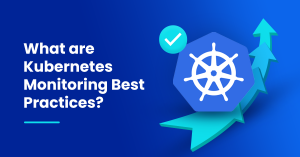
In the world of container orchestration, Kubernetes has emerged as the de facto standard for managing and scaling applications. However, ensuring their health and performance becomes increasingly challenging as clusters grow in complexity and scale. This is where effective Kubernetes monitoring comes into play. By implementing the right monitoring practices, you can gain valuable insights into your cluster’s resource utilization, application performance, and overall health. This article will explore the best practices for Kubernetes monitoring, empowering you to optimize your cluster and deliver a seamless experience to your users.
Define Clear Monitoring Objectives:
Before diving into Kubernetes monitoring, it is crucial to define your monitoring objectives. Clearly identify the metrics and key performance indicators (KPIs) that align with your business goals. This will help you determine which aspects of your cluster require monitoring and set a benchmark for evaluating performance.
Monitor Cluster and Node Health:
Begin by monitoring the overall health of your Kubernetes cluster and individual nodes. Use tools like Prometheus, Grafana, or Datadog to collect and visualize key metrics such as CPU and memory utilization, network latency, disk usage, and node availability. By regularly monitoring these parameters, you can proactively identify any issues or bottlenecks and take necessary action before they impact your applications.
Track Resource Utilization:
Monitoring resource utilization is vital for optimizing your cluster’s efficiency. Monitor CPU, memory, and storage usage across your pods, containers, and nodes. With tools like Heapster or kube-state-metrics, you can collect real-time data and gain insights into resource allocation and potential performance bottlenecks. Analyzing this information will enable you to allocate resources effectively and prevent resource starvation or oversubscription.
Monitor Application Performance:
The performance of your applications directly impacts user experience and satisfaction. Implement application-specific monitoring to track response times, request, and error rates. Tools like Prometheus or Elastic Stack can help you collect application metrics and logs, enabling you to identify performance issues, troubleshoot errors, and optimize your application’s performance.
Set Up Alerting and Notifications:
Timely detection and response to critical issues are essential for maintaining a healthy Kubernetes cluster. Establish effective alerting mechanisms using tools like Prometheus Alertmanager or Grafana alerts. Define alert thresholds for metrics that indicate potential problems, such as high CPU usage or node failures. Ensure alerts are sent to the appropriate teams or individuals via email, Slack, or other communication channels, enabling swift action to mitigate any issues.
Implement Log Aggregation and Analysis :
Logs are a goldmine of information regarding troubleshooting and root cause analysis. Use centralized log management solutions like Elasticsearch, Fluentd, and Kibana (EFK) or the Elastic Stack (ELK) to aggregate and analyze logs from all components of your Kubernetes cluster. You can gain insights into application behavior, identify anomalies, and quickly respond to errors or security incidents by monitoring logs.
Embrace Kubernetes Native Monitoring:
Kubernetes offers native monitoring capabilities through its built-in components like kube-state-metrics, cAdvisor, and metrics-server. Leverage these components to gather essential metrics on your cluster’s state, resource usage, and performance. Combine them with popular observability tools like Prometheus and Grafana to create comprehensive monitoring dashboards that provide real-time visibility into your Kubernetes environment.
Conclusion:
Effective monitoring is crucial for the success of your Kubernetes cluster. By following these best practices, you can gain valuable insights into your cluster’s health, resource utilization, and application performance. With clear monitoring objectives, robust alerting mechanisms, and centralized log management, you can proactively address issues, optimize resource allocation, and enhance your cluster’s overall stability and performance. Embrace the power of Kubernetes monitoring and unlock the potential of your containerized applications, delivering an exceptional user experience and enabling seamless scalability as your business grows.

